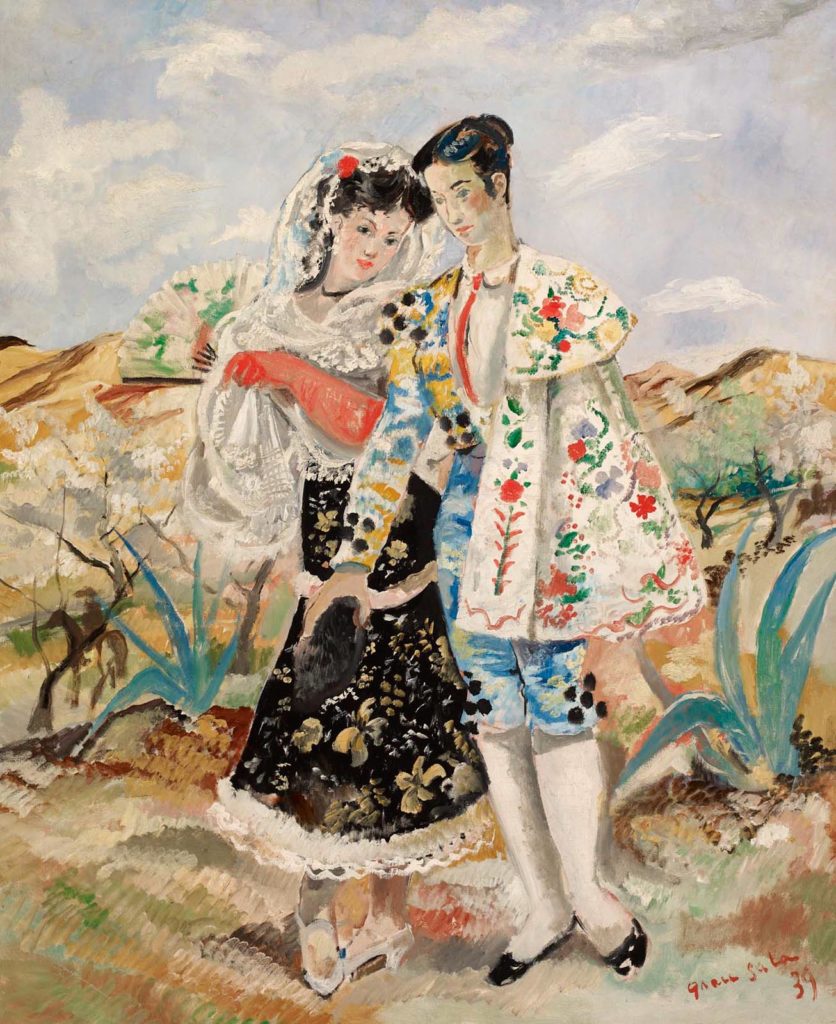In Paris, Emili Grau Sala joined a group of Spanish artists and became a leading figure in the Paris School. From then onwards, his work was highly influenced by Pierre Bonnard and Raoul Doufy, with many echoes of French post-impressionism. Shortly before creating this painting, in 1936, the artist was awarded one of the prestigious Carnegie prizes, the name by which the international painting competitions held in Pittsburgh, USA were known in Europe from the end of the 19th century. With a festive and optimistic style, the depiction of the couple in Maja y torero belongs to the theme known as La Espagnolade. They are genre and costumbrismo paintings, with an exotic theme. The Spanish aesthetic was in vogue and popular among intellectuals, writers and artists from the end of the 18th century and throughout the 19th century. It emerged from a stereotype of the country with bullfighters, working-class Madrid ladies in flamboyant dress and flamenco dancers, with a taste for the Hispano-Islamic aesthetic. A romantic vision of Spanish exoticism, La Espagnolade was prominent in the court of Eugénie de Montijo (married to Napoleon III) and was associated with the leading names in the opera Carmen by Merimée and Bizet. It offers an eccentric view of Spain that is described and depicted outside the realms of reality, according to the taste and collective imagination of the time. Often, representations of this theme were imposed on Spanish painters by demand from collectors, critics and dealers.

